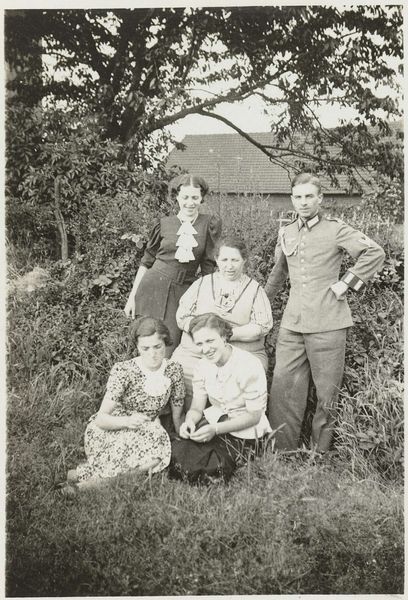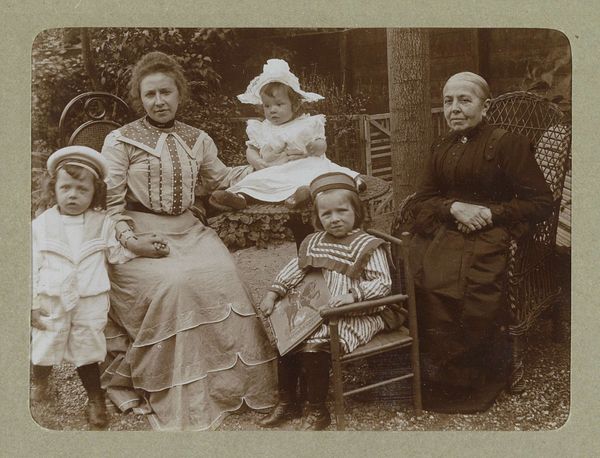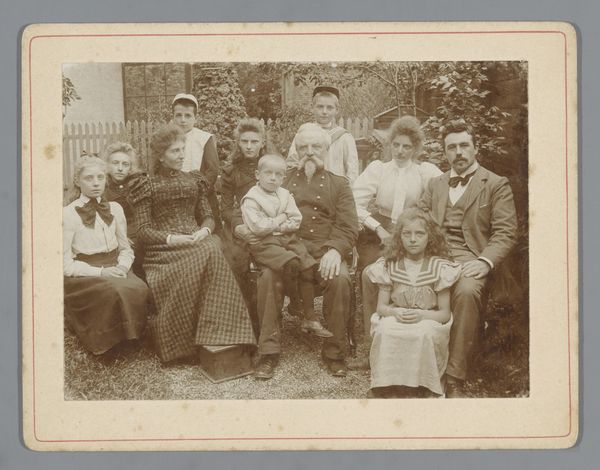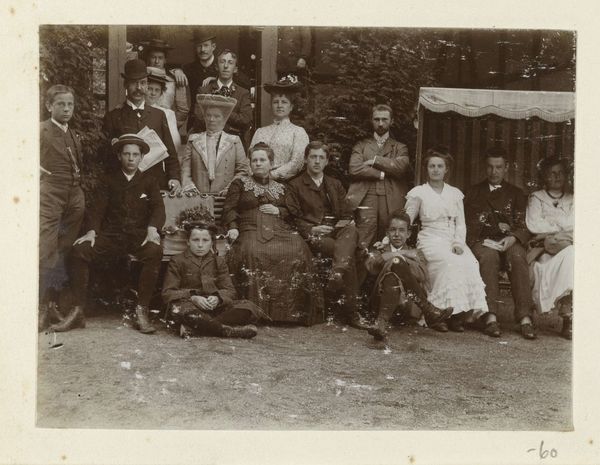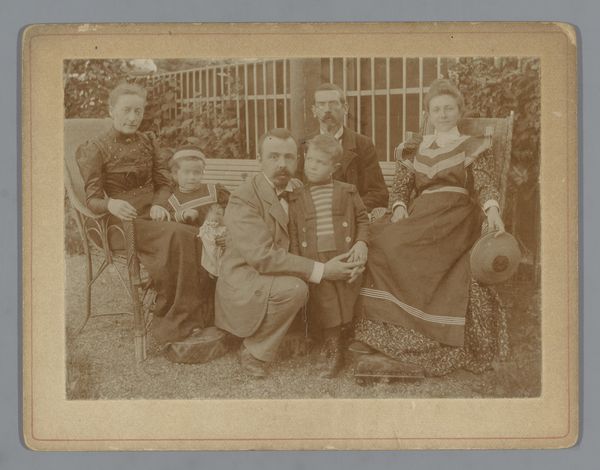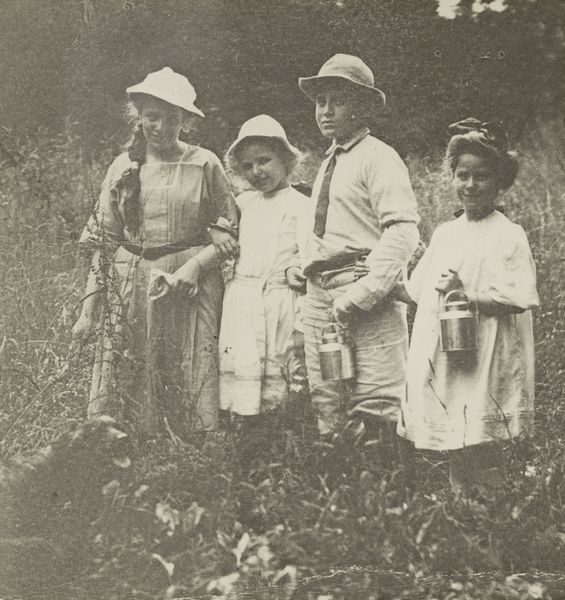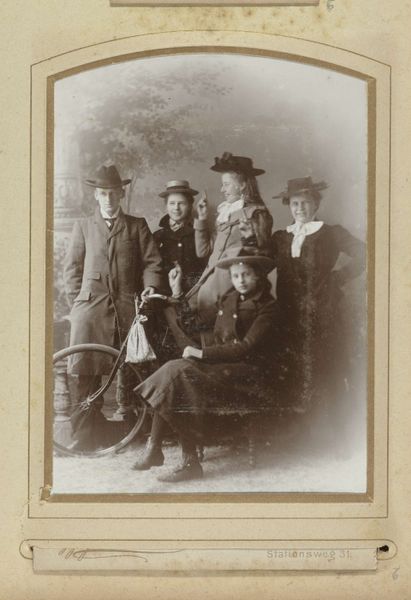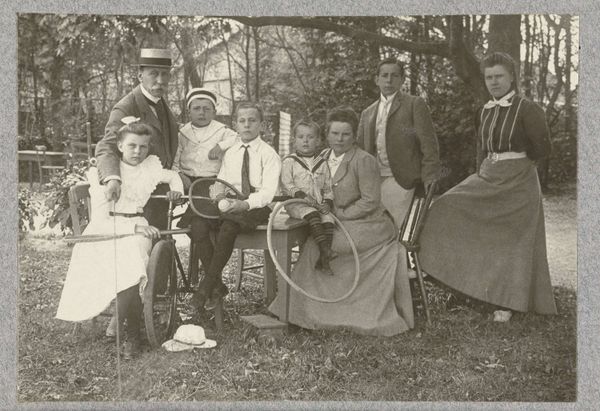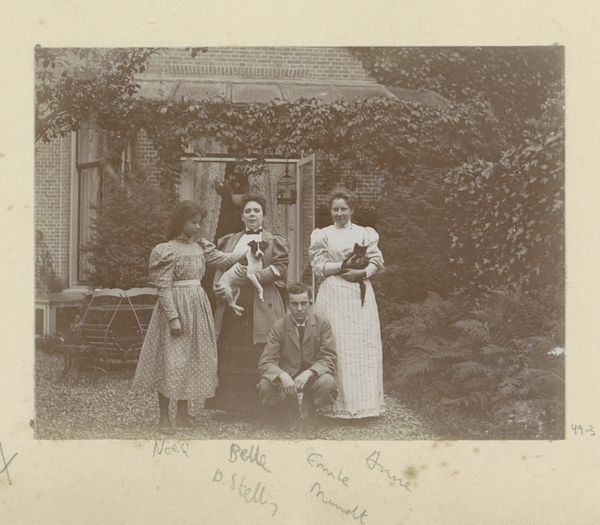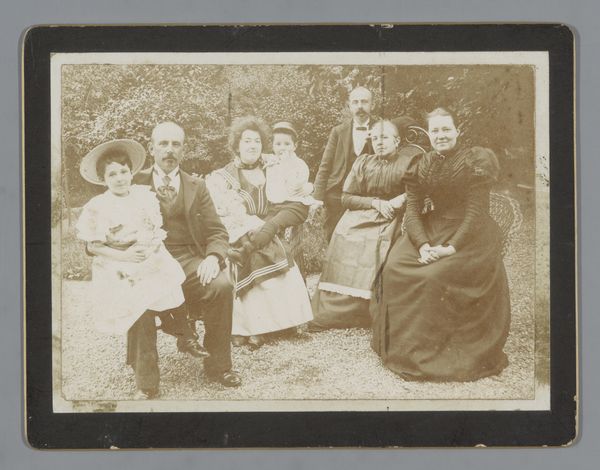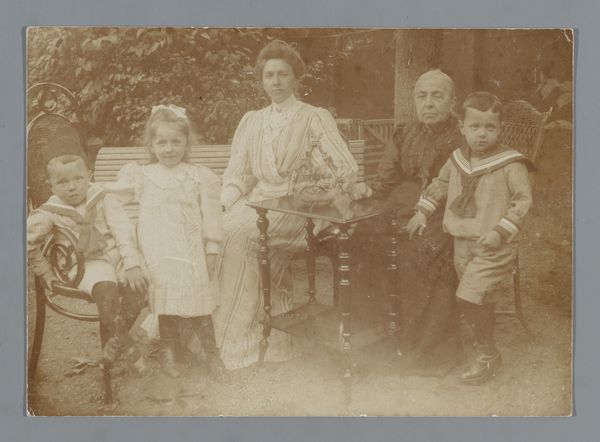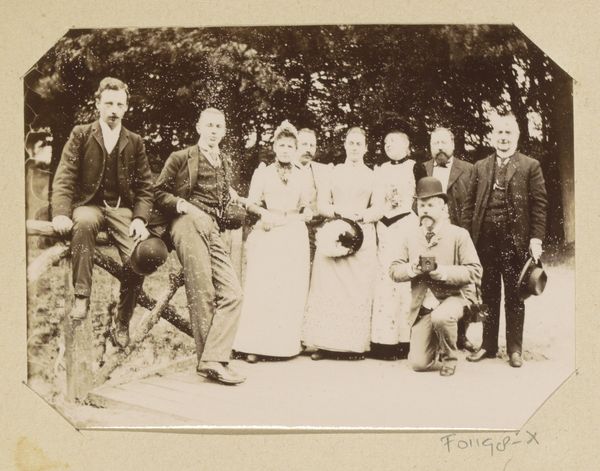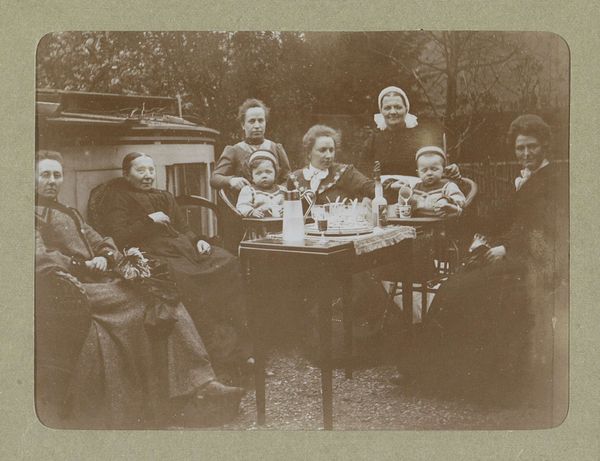
photography, gelatin-silver-print
#
portrait
#
print photography
#
landscape
#
photography
#
intimism
#
group-portraits
#
gelatin-silver-print
Dimensions: height 87 mm, width 138 mm, height 83 mm, width 115 mm
Copyright: Rijks Museum: Open Domain
Curator: Welcome. Here we have a gelatin-silver print by Willem Witsen entitled "Vrouw drie kinderen," or "Woman and Three Children," dating from approximately 1860 to 1915. Editor: It projects an atmosphere of rather composed solemnity. The stark contrast of blacks and whites captures an apparent middle class family amid the staged artifice of a rugged outdoor landscape. The rigidity of the posture is off-putting. Curator: The composition directs the eye intentionally; observe how the varying heights of the subjects create an uneven yet compelling distribution of form across the picture plane. Witsen uses a somewhat elevated vantage, which diminishes depth but allows an intimate examination of form. Editor: Intimate yes, but I can’t escape the societal implications. Here is a white family grouped as an intentional display of hierarchical social constructs, seemingly framed for the male gaze. The landscape behind them almost suggests their claim of dominance over nature. Curator: If you consider how the light articulates form and texture – consider how the waterfall is captured to highlight a fluid feel next to firm stances, almost dissolving detail to accentuate only shapes. It appears, fundamentally, to showcase a study in tonal values more than making statements of dominion. Editor: But to extract that single element – this study of tones and shape – neglects how power functions and resonates even in simple black and white photographs, then and now. How family legacy translates into social authority in such formal presentation can not be unseen for many viewers. Curator: While you contextualize the photograph within specific socio-political frameworks, which has value, consider that its aesthetic impact remains firmly planted in the visual structure itself; and there lies its continued fascination in an arrangement of shape. Editor: Indeed; by appreciating this arranged and curated form we are then drawn deeper into those frameworks where we observe and can better interpret historical power dynamics at play through carefully calibrated form, and therefore function. Curator: A suitable closing. Shall we proceed?
Comments
No comments
Be the first to comment and join the conversation on the ultimate creative platform.
